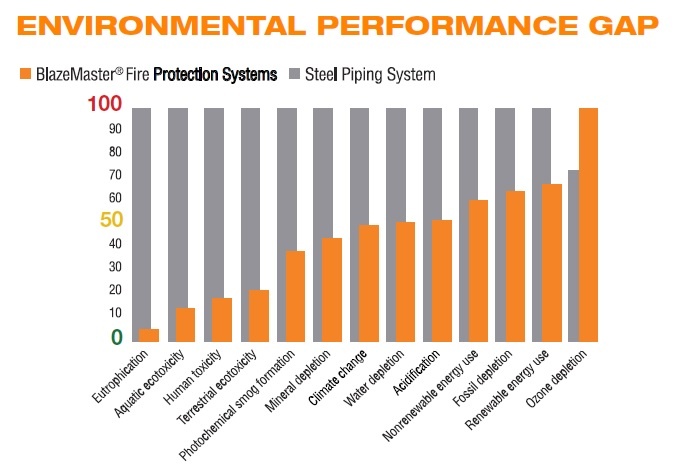Introducing the Eco-Friendly Fire Protection System from BlazeMaster
In a world that is more environmentally-conscious than ever, installers and specifiers in the fire protection industry are seeking eco-friendly materials to meet the demands of their new and prospective clients.
Corporate social responsibility expert and contributor to the thought-leadership Forbes website, Susan McPherson, explains the shift in consciousness of businesses. “In the past decade, we’ve witnessed a stunning transition as corporate social responsibility (CSR) evolved from a nice-to-have silo to a fundamental strategic priority for businesses large and small.”
“Under new challenges and changing regulations, companies won’t just uphold their commitments to sustainability - they will be at the forefront of global progress like never before.”
With CSR becoming of huge importance to organisations, it means all purchases and the way they operate has to be scrutinised - including the implementation of building upgrades, such as a fire protection system.
CPVC fire protection systems
So how do BlazeMaster®’s CPVC fire protection systems compare to steel systems when impacting the environment? The creator of CPVC, the Lubrizol Corporation, was keen to learn about the environmental impact of its product, and ensure informed decisions are made when material is chosen for fire protection systems.
Lubrizol conducted a Life Cycle Assessment (LCA) to examine the energy input and output during all stages of the product’s lifetime. Here are the findings from the assessment and how CPVC performed against steel.
The study
A Life Cycle Assessment goes beyond analysing initial carbon emissions and energy usage when creating a product. It also includes factors such as resource depletion and human toxicity. In short, it is a “cradle to grave” evaluation to assess how detrimental a product can be to the environment.
The ISO-compliant study analysed both BlazeMaster CPVC piping and steel piping, as the most commonly-used materials for fire sprinkler on the market. To date, BlazeMaster is the only brand of Fire Protection systems in the industry to conduct such a study. Here’s what we found:
The results

BlazeMaster Fire Protection Systems beat steel in 12 of the 13 categories of environmental impact. For example, in human toxicity (chemicals emitted to the environment from human activity, and their impact on health), BlazeMaster CPVC piping outperformed steel 10 times over. Likewise for climate change impacts and renewable energy use, BlazeMaster Fire Protection Systems outperformed steel by 50% and 60% respectively.
In response to the report, Michael Collins, technical director at Environmental Resources Management, said: “BlazeMaster fire sprinkler systems emerged as a much stronger choice for an environmentally friendly fire sprinkler solution.”
CPVC can be recycled as PVC piping or window profiles, with the material collected on the job site by specialised recycling firms. It can then be ground into pellets and granules, and mixed into applications including floor fillings, speed bumps, and car mats
Installing BlazeMaster Fire Protection Systems will prove your commitment towards corporate social responsibility, and become part of a thankfully essential growing trend in today’s businesses.
The ever-increasing gap
As the CPVC recycling infrastructure grows and the recycling rate increases, BlazeMaster CPVC piping is expected to widen its environmental performance gap over steel piping systems for years to come, providing another reason why you should ask for it by name.
Our mission is always to keep our communities safe - providing an ecological solution for the industry is another essential step to complete this mission.
‘CPVC is not eco-friendly’ is just one of many misconceptions we’ve heard about BlazeMaster Fire Protection Systems. Download our slide deck that addresses the most common myths surrounding CPVC today.
